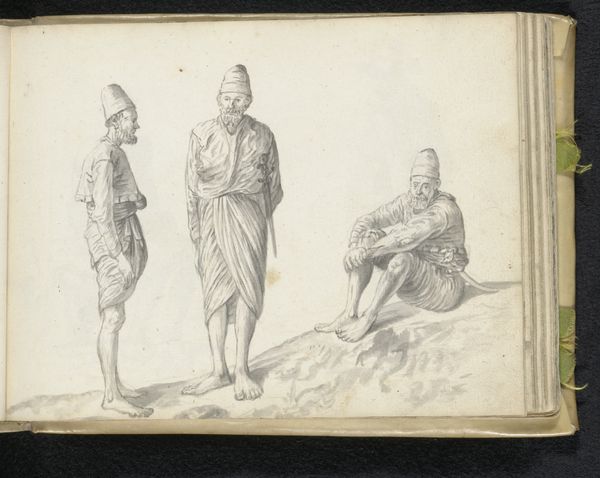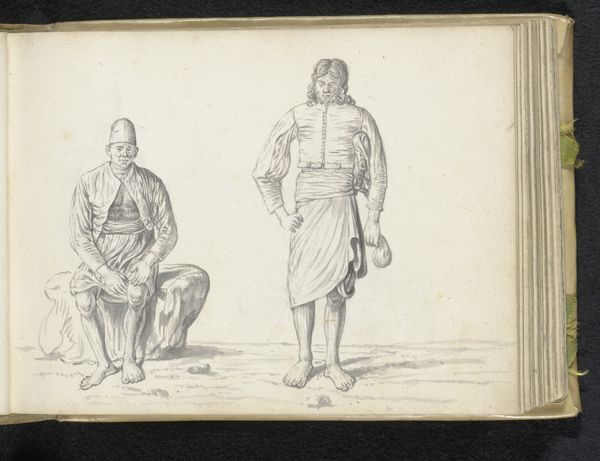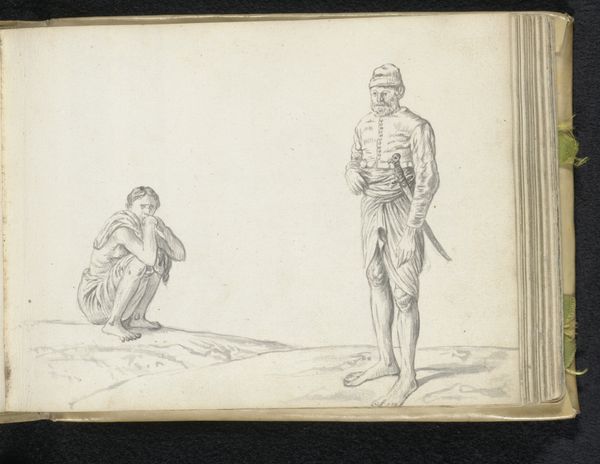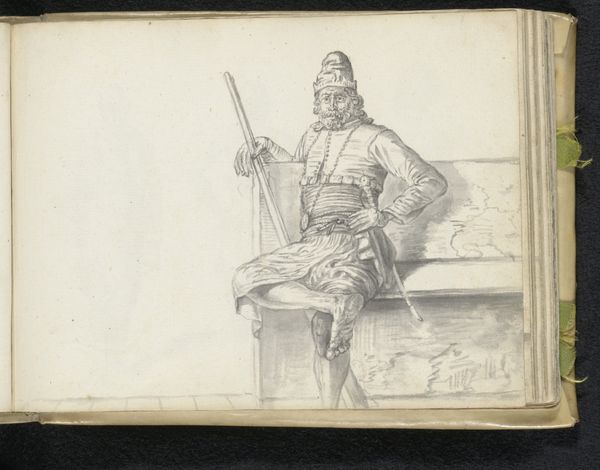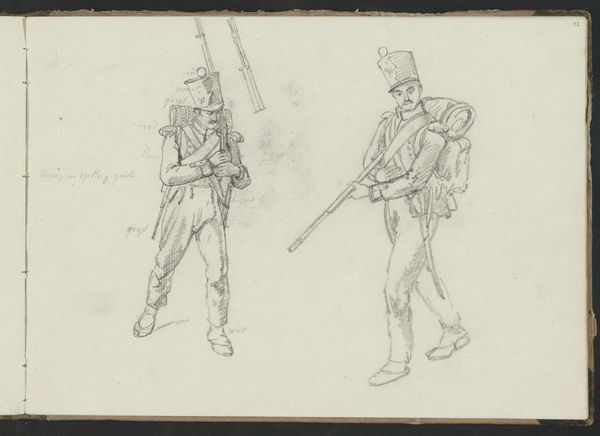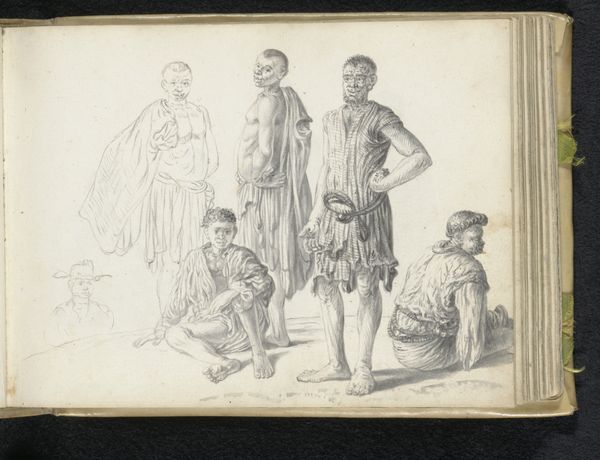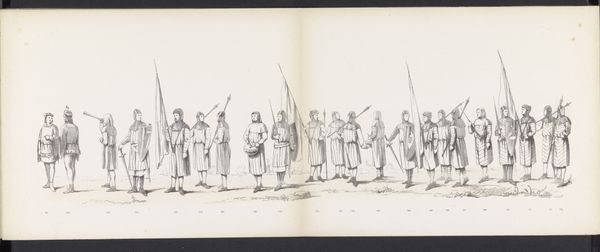
drawing, pencil
#
portrait
#
drawing
#
imaginative character sketch
#
toned paper
#
light pencil work
#
quirky sketch
#
dutch-golden-age
#
sketch book
#
figuration
#
personal sketchbook
#
sketchwork
#
pencil
#
sketchbook drawing
#
genre-painting
#
history-painting
#
storyboard and sketchbook work
#
sketchbook art
Dimensions: height 148 mm, width 196 mm
Copyright: Rijks Museum: Open Domain
Esaias Boursse sketched these Two Sinhalese Soldiers with graphite on paper sometime in the mid-17th century. Graphite, a relatively soft and readily available material, allowed Boursse to capture the likeness and detail of his subjects efficiently. Notice how the quality of the graphite lines varies. Boursse uses delicate, thin strokes to define the figures' features and clothing, while broader, shaded areas create volume and depth. The paper, likely a common writing or sketching material at the time, bears the marks of the artist's hand, with slight imperfections and variations in texture that add to the drawing's intimacy. Consider the social context, as Boursse was a Dutch artist working for the Dutch East India Company, which held sway in Ceylon, now Sri Lanka. The drawing is not merely an objective record, but evidence of European colonial expansion and its complicated legacy. Looking at the material and the making of this drawing gives us insight into the complexities of cross-cultural exchange and representation during the age of exploration and trade.
Comments
No comments
Be the first to comment and join the conversation on the ultimate creative platform.
